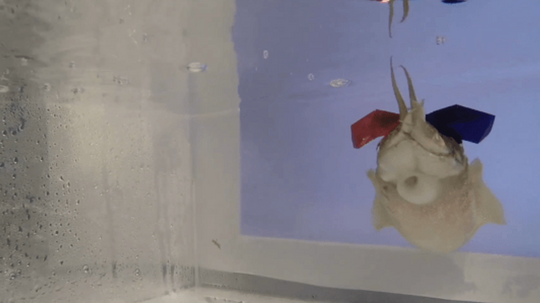
Scientists at the University of Minnesota are taking an odd and innovative approach to studying animal behavior.
Researchers released a report last week describing how they built an underwater theater and equipped cuttlefish with 3D glasses to investigate how the creatures hunt their prey.
The goal of the study was to test how the cuttlefish brain understands the distance from one object to another. The process of comparing these images is called stereopsis and is similar to how humans determine depth.
In order to study this process, scientists super glued velcro to the skin of the cuttlefish, then attaching a red lens near one eye and a blue lens near the other. They then played a video of a shrimp to see how the fish would react.
Depending on how the image was offset, the cuttlefish would perceive the shrimp to be either in front of or behind the screen. Through this process, the investigators found that the ability that allows cuttlefish to successfully determine distances is different and perhaps more advanced than its cephalopod relatives (like squid and octopus).
Predictably, images from the study received national attention:
Trevor Wardill is an assistant professor at the U's College of Biological Sciences and has been studying insect vision for around 15 years. Wardill, the lead author of the paper, told CNN that his team was inspired by scientists at Newcastle University who published a study in 2019 examining the eyes of praying mantises in a similar fashion.
In its report on cuttlefish, the University of Minnesota said that studies like this are leading scientists to reconsider the capabilities of invertebrate brains.
"While Cuttlefish have similar eyes to humans, their brains are significantly different," Paloma Gonzalez-Bellido, assistant professor at the Department of Ecology, Evolution and Behavior in the College of Biological Sciences, said in a statement. "We know that cuttlefish brains aren't segmented like humans. They do not seem to have a single part of the brain – like our occipital lobe – dedicated to processing vision. Our research shows there must be an area in their brain that compares the images from a cuttlefish's left and right eye and computes their differences."








